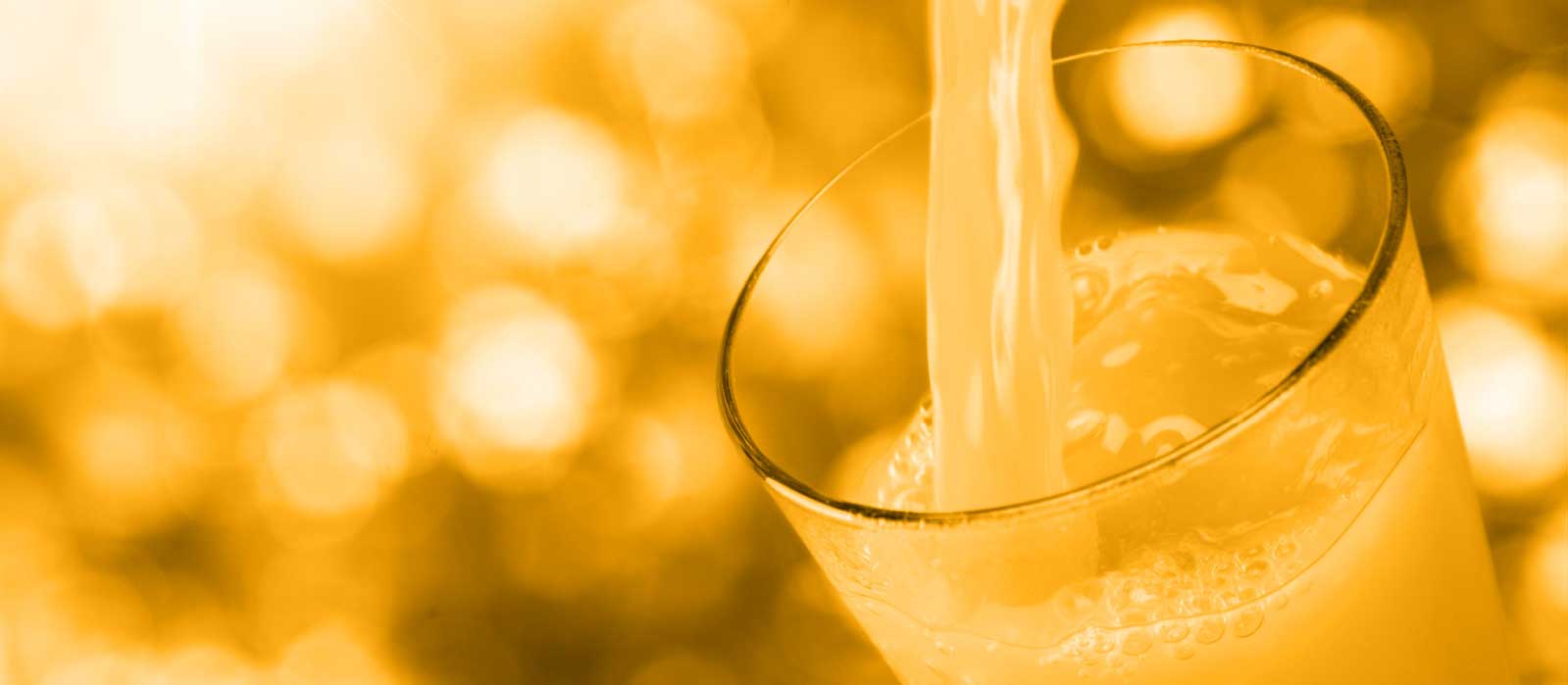Juice

Kiwis love their juice and we are some of the highest consumers of juice in the world.
Juice is one of the most popular beverages worldwide and is made from the extraction or pressing of the natural liquid contained in fruit and vegetables.
We love our juice and have one of the highest rates of consumption in the world. In fact, 7.4% of all beverages consumed by New Zealanders is juice.
Juice is a healthy beverage choice and is full of vitamins, mineral and antioxidants. In fact, a glass of pure juice can help you meet your daily intake recommendations for nutrients.
Juices can legally only have a small amount of sugar added. In fact, by law, juice can have no more than 40 grams of added sugars per kilogram of juice (that means it can contain no more than 4 percent sugar).
A small number of other additives might be added into the juice to protect it, such as Vitamin C, which is added to apple juice to stop it turning brown and protect the natural antioxidants present.
All additives must be declared on the ingredients statement on the label.
As a major global producer of fruit, New Zealand is also a major producer of fruit juice, and every year we export around $US52 million in juice around the world.
Not all juice and fruit drinks are the same and they can come in many different varieties.
In New Zealand, fresh juice should only be applied to those juices that are made in front of you. If a juice is pasteurised or preservatised, contains juice concentrates, or is a stored juices then it is NOT fresh juice.
NFC juice (Not from Concentrate juice) can only be used to describe juice that has not undergone concentration or dilution during processing, meaning it retain some of the characteristics of fresh juice.
Some juices contain blends of NFC juice and reconstituted juice however, by law these cannot be labelled as NFC juices.
Reconstituted juices are juices that have been produced by adding water back into juice concentrates. Juice concentrate is made by removing the water from natural juice at low temperatures and under vacuum. This enables the juice concentrate to be more easily stored, shipped and blended economically anywhere in the world, where the water can be put back into them. That is, they are reconstituted into their original form.
Juice drinks and fruit drinks are typically those drinks that contain a minimum of 5 percent fruit content and have water, sugar, food acids, flavours and colours added so that they mimic fruit juice. Drinks that contain less than 5 percent fruit content are usually labelled as flavoured drinks.
Cordials are sweetened syrup concentrates that are designed to be diluted with water. Fruit juice content in cordials has a wide variation, from none to up to 100 percent. Fruit syrups are a type of cordial but must contain a minimum of five percent fruit juice when diluted as per the instructions.
Cordials generally have long shelf lives through the use of preservatives, packaging or because they are very highly concentrated.
Nectars are beverages that are usually of a thick and syrupy consistency and made from fruit purees rather than fruit juice. While not defined in the Australia New Zealand Food Code, their fruit content is usually above five percent but they usually contain less than 100 percent juice.
Quenchers, while not legally defined, usually have a fruit juice content of above five percent but less than 50 percent. They tend to be of a thin consistency, not overly sweet and are easy to drink. They contain reconstituted fruit juice and/or puree and often contain fruit particles. Water, sugar, food acids and flavours are often added to enhance and supplement the fruit content of quenchers.
Crushies usually contain a high fruit content, though not necessarily high enough to be considered a juice, as well as identifiable fruit pieces. Crushies are not legally defined in New Zealand and Australia.
Smoothies tend to fall into two categories. Fruit smoothies are thick fruit based beverages and are often sweetened with banana or apple puree. Fruit content is often fruit puree rather than fruit juice.
Traditional smoothies are generally dairy/fruit juice blends. The dairy component is usually ice cream or milk and the fruit component can be either juice or fruit puree
Smoothies are not legally defined in New Zealand or Australia.
